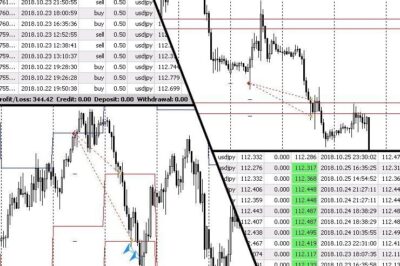Contents
For instance, one Solana cluster could be responsible for maintaining a virtual world, while another Solana cluster could be tasked with hosting a decentralized exchange. Anyone can run a validator node and read the “Running a Validator” information on Solana’s documentation website for help and advice on getting started. Unlike most crypto projects, there is no minimum stake required to be a validator on the network. Buying and selling SOL, or trading it for any other cryptocurrency, is done in mere moments when you choose our secure platform as your storage solution. Kriptomat offers a secure storage solution, allowing you to both store and trade your SOL tokens without hassle.
Decentralization is one of the critical areas that separates Solana from a major competitor like Ethereum. ETH is a decentralized network that currently relies on a PoW consensus mechanism but is looking to move to a PoS protocol in its next iteration. The fundamental principle of blockchains and cryptocurrencies is decentralization.
This makes Solana Pay viable in brick-and-mortar stores and online retailers that don’t choose to accept cryptocurrency directly as a form of payment. The Solana blockchain currently holds $4 billion in USDC, so it’s clear there’s interest in the coin. It’s important to understand the Proof-of-Stake, or PoS, mechanism that underlies the Solana blockchain.
- In the past years, she came up with many clever ideas that brought scalability, anonymity and more features to the open blockchains.
- Generally, blockchains have greater scalability, depending on the number of transactions per second they can support, the more and better they scale.
- Because the nodes can rely on the structure of the system to enforce transaction ordering, they can devote more energy to efficiently processing blocks and getting valid blocks into the ledger.
- Solana’s native cryptocurrency, SOL, has garnered a lot of interest in recent months, particularly during the recent crypto rally.
- Transmitting data in smaller increments helps with the bandwidth issues and increases the network’s processing speed.
The most popular one by far is the implementation of the PoH consensus that rewards users with speed. As you explore the more than 18,000 types of cryptocurrency on the market today, you may be wondering how to make the right crypto investment for you. Stash can help guide you in your Cryptocurrency Exchange: Beaxy Review investment journey with crypto-friendly investments, and more. Whether you choose Solana, Ethereum, Bitcoin, or other crypto assets, it’s never too early to start investing in your future. Solana already has over 250 projects and partners, including USDC, Chainlink, BSN, and Serum.
Related Post
The validation process is made more efficient thanks to Proof of History. Solana blockchain and helps in network reach consensus on time and sequence of transactions. The network develops a cryptographically secure time throughout the network. With the help of Proof of History, you can get a unique output suitable for public verification. As a result, the nodes don’t have to work in coordination with the whole network.

We can say that PoH allows for fault tolerance in the network by providing a strong mechanism for eventual consistency, even in the face of a large network partition . Because the nodes can rely on the structure of the system to enforce transaction ordering, they can devote more energy to efficiently processing blocks and getting valid blocks into the ledger. Solana’s currency is currently the fifth largest by market cap, with a modest $15 billion market cap at the time of this writing (which, not incidentally, is the midst of 2022’s crypto winter).
Clusters are groups of validators with different purposes, but their main task is to work together by serving client transactions. According to Solana, Clusters may coexist, and when two clusters share a common genesis block, they attempt to converge. In Solana’s case, it uses SHA256 (Secure Hash Algorithm 256-bit) – a set of patented cryptographic functions that outputs a value 256 bits long . The Solana network periodically samples the count and hashes of the SHA256, providing real-time data instructed by the set of hashes included on CPUs. PoH relies on Proof of Stake, using the Tower BFT algorithm for consensus, which functions like an additional tool to verify transactions. Solana is a decentralized protocol for building dApps with a reported throughput of 65,000 transactions per second thanks to its distributed computing system.
What Makes Solana Different from Other Blockchains
This open source initiative also allows for much greater efficiency than current models using only a few hundred nodes. Though DApps are currently stuck on the Ethereum platform due to its composability, many are looking for alternatives given how expensive and slow it’s become. On 14 September 2021, the Solana blockchain went offline after a surge of transactions caused the network to fork, and different validators had different views of the state of the network. The outage at the beginning of the month lasted roughly seven hours, and the one at the end of the month lasted about four and a half hours. Solana’s native token, SOL, is trading at US$65.06 at publishing time, with a maximum supply of 489 million coins and a circulating supply of 286 million tokens. This is the protocol responsible for transaction caching and for forwarding them to the edge of the network.
Yakovenko wrote a whitepaper on the concept of timekeeping technique concerning the distributed systems known as Proof of History . Proof of History helps in eliminating the issue of scalability and time needed to reach the consensus on transaction orders. Yankovenko believed that this innovative technique could easily automate the blockchain process of transaction CM Trading: Is it a scam? ordering, giving a key piece that will drive the crypto networks to scale beyond their capacity. Therefore, Transaction Speed is one of the major factors in blockchain development as it also drives network traffic. The increased transaction speed of blockchain results in better data transferring amongst the various parties for confirming the transactions.

Investopedia requires writers to use primary sources to support their work. These include white papers, government data, original reporting, and interviews with industry experts. We also reference original research from other reputable publishers where appropriate. You can learn more about the standards we follow in producing accurate, unbiased content in oureditorial policy. Elvis Picardo is a regular contributor to Investopedia and has 25+ years of experience as a portfolio manager with diverse capital markets experience. As Solana comes with its benefits and risks, it’s essentially your responsibility to research well and perform your due diligence before investing.
Web3 Jobs: How to Get a Job in Crypto Sector
As far as network speed goes, Solana is the fastest blockchain network in the industry, with the potential to process about 65,000 transactions per second. It clearly beats Polkadot, which can only validate about 1,000 transactions in the same period. According to Solana Beach, currently, there are 1913 validators on the Solana network, with just 30 of these holding more than 30% of the total stake amount. Moreover, the emergence of so many blockchain networks over the course of the last few years has given rise to the issue of interoperability. Each blockchain ecosystem has a unique mechanism to tackle a wide range of problems.
The validator network then returns the votes on the transaction to the PoH generator and the transactions are considered valid. It’s a bit harder to understand how it improves processing time and transaction costs. The Solana whitepaper is a deep dive into the implementation details, but it can be easy to miss the forest for the trees. Also, it is worth noting that Solana’s blockchain, while implementing one of the variations of PoS, is more eco-friendly and sustainable. This is in contrast with Ethereum, whose current PoW model requires the use of tremendous computational power. But as with all cryptocurrencies, investors should consider speaking with a financial advisor before investing in Solana.
Solana is a cryptocurrency that was designed to work similarly to and improve upon Ethereum. Named after a small Southern Californian coastal city, Solana is the brainchild of software developer Anatoly Yakovenko. The editorial content of OriginStamp AG does not constitute a recommendation for investment or purchase advice. At the end of the day, Polkadot and Solana’s mission is to improve the way cryptocurrency is used to better people’s lives. This makes them harmful to the environment, something that has to be solved in order to ensure a thriving future for the industry.
He began his financial writing career in 2005 as a marketing copywriter, which is how he refined his investing knowledge and skills. Over the years, he’s written editorial and marketing pieces for many of the world’s leading financial newsletters and publications. His main investing interests are technology, blockchain and cryptocurrency. Routledge points out that trying to process transactions quickly usually requires centralization. For example, Visa uses a huge network of computers to keep its processing speed on track.

What the Solana blockchain network employs are two different ways to ensure the confirmation of transactions on its blockchain network. The only way to generate this chain is by a single thread doing all the necessary AxiTrader Forex Broker Review work, but it can be validated by splitting the work across many processing units. In Solana, validators “step back” through time to ensure that events occurred in the order which was returned by the leader.
Solana vs. Ethereum
The overall project development and projects that joined Solana contributed to the positive market sentiment. Most permissionless blockchains see Solana as a potential competitor, as it is a viable alternative to older smart contracts blockchains. Many compare Solana to Ethereum, which is the first blockchain-based server platform. The main advantage is that the platform can process up to 50,000 TPS, while Ethereum’s rate is between 15 and 45 TPS. Solana implements a practical Byzantine fault tolerance, in short pBFT, which is optimised for PoH. The tower BFT is an algorithm that uses the PoH as the cryptographic clock to help it reach consensus without having to send a flood of communication between the nodes.
Since then, it has become one of the fastest-growing protocols in the DeFi space. In 2021, the protocol caught the market’s attention not just because of its technology but also because of the impressive performance of its native SOL token, which exploded in value. It is a sequence of computations that provides a digital record to prove that an event occurred on the network at any given time.
Additionally, instead of the arduous task of communicating the state of the blockchain to all network validators for each transaction, the novel PoH is also used to help run transactions on the chain. Yakovenko’s previous work experience was in the field of distributed systems design with leading technology companies such as Qualcomm Incorporated . This experience made him aware that a reliable clock simplifies network synchronization, and when that occurs, the resulting network would be exponentially faster, with the only constraint being its bandwidth.
Solana has the potential to disrupt the DApp ecosystem with its next-gen capabilities. The platform is an upgraded blockchain that solves many of the issues that well-known blockchain experienced. Ethereum 2.0 is still some way out, so there’s a chance that Solana could find a strong foothold in the market. The Swiss Foundation, which has an independent board, holds the community tokens.
In the past years, she came up with many clever ideas that brought scalability, anonymity and more features to the open blockchains. She has a keen interest in topics like Blockchain, NFTs, Defis, etc., and is currently working with 101 Blockchains as a content writer and customer relationship specialist. Solana blockchain could easily address the concerns pertaining to bandwidth alongside increasing the overall capacity for faster transaction settlement.
